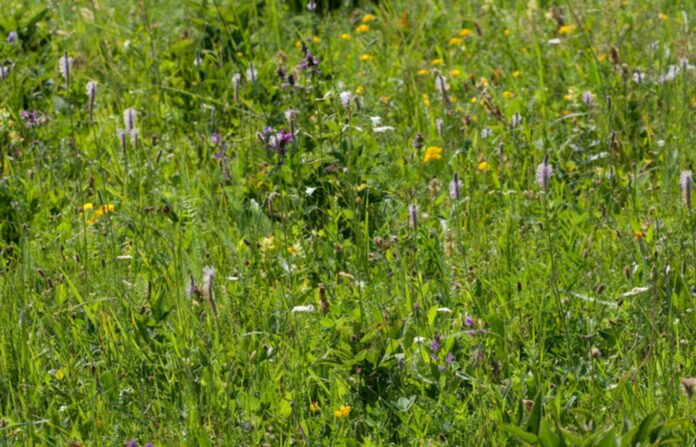It may sound strange, but the Eastern European steppes have the same number of plant species as the Amazon jungle.
This, however, is only noticeable when species are tallied in small sampling areas as opposed to hectares of land.
The extent to which estimates of plant diversity vary depends on the sampling area, which can range from a few square meters to hectares, according to new research from an international team of scientists led by the Martin Luther University Halle-Wittenberg (MLU) and the German Centre for Integrative Biodiversity Research (iDiv) Halle-Jena-Leipzig.
Their findings were published in the journal Wildlife Communications and could be used to develop new, more customized nature conservation strategies.
The team’s work involved the analysis of a dataset made up of over 170,000 vegetation plots from every climate zone on Earth. The data includes the coordinates of the specific area being studied as well as details on every plant species discovered there. The information was obtained from the iDiv-hosted “sPlot” global unique vegetation database.
“Most studies on global biodiversity,” according to MLU Professor Helge Bruelheide, “are conducted on a relatively large scale, for example at a state or provincial scale. We wanted to find out how much results differ when smaller areas are examined.”
Using artificial intelligence, the team investigated, among other things, the link between the number of plant species and the size of the study area.
Their research revealed that there are areas on Earth where focusing on large study areas only provides a limited understanding of the distribution of biodiversity: for example, in the steppes of Eastern Europe, Siberia, and the Alpine countries of Europe, small areas can have relatively high biodiversity.
The significant biodiversity disparity between the tropics, such as the Amazon, and temperate temperature zones essentially disappears at fine spatial scales.
The same holds true for the tropical regions of Africa, which were once thought to be an outlier in the world of tropical plants.
“The tropics have always been among the most biodiverse areas in the world. We wondered why this shouldn’t also apply to Western Africa,” adds Dr. Francesco Maria Sabatini, the study’s principal investigator.
In fact, according to Sabatini, there are large variations in the distribution of plant species in the African tropics. These species are dispersed over vast distances, thus they are not always found in limited sample areas.
“To correctly recognize the high biodiversity in Western Africa many small areas are required,” Sabatini continues.
The study also demonstrates that it is unimportant whether the geographical scale is used to evaluate other very biodiverse places, such as the Cerrado savanna region in Brazil or locations in Southeast Asia. These findings are crucial for the preservation of species.
“Ecosystems whose high biodiversity is spread out over a large area,” according to Bruelheide, “cannot be protected through the traditional patchwork of nature reserves. In contrast, ecosystems that have high biodiversity within a small area could benefit well from several distinct protected zones.”
Image Credit: Getty
You were reading: Weird But True: Small Areas Can Have As Many Plant Species As Amazon Rainforest
